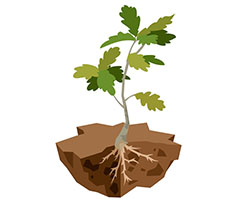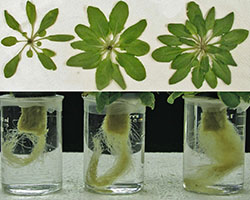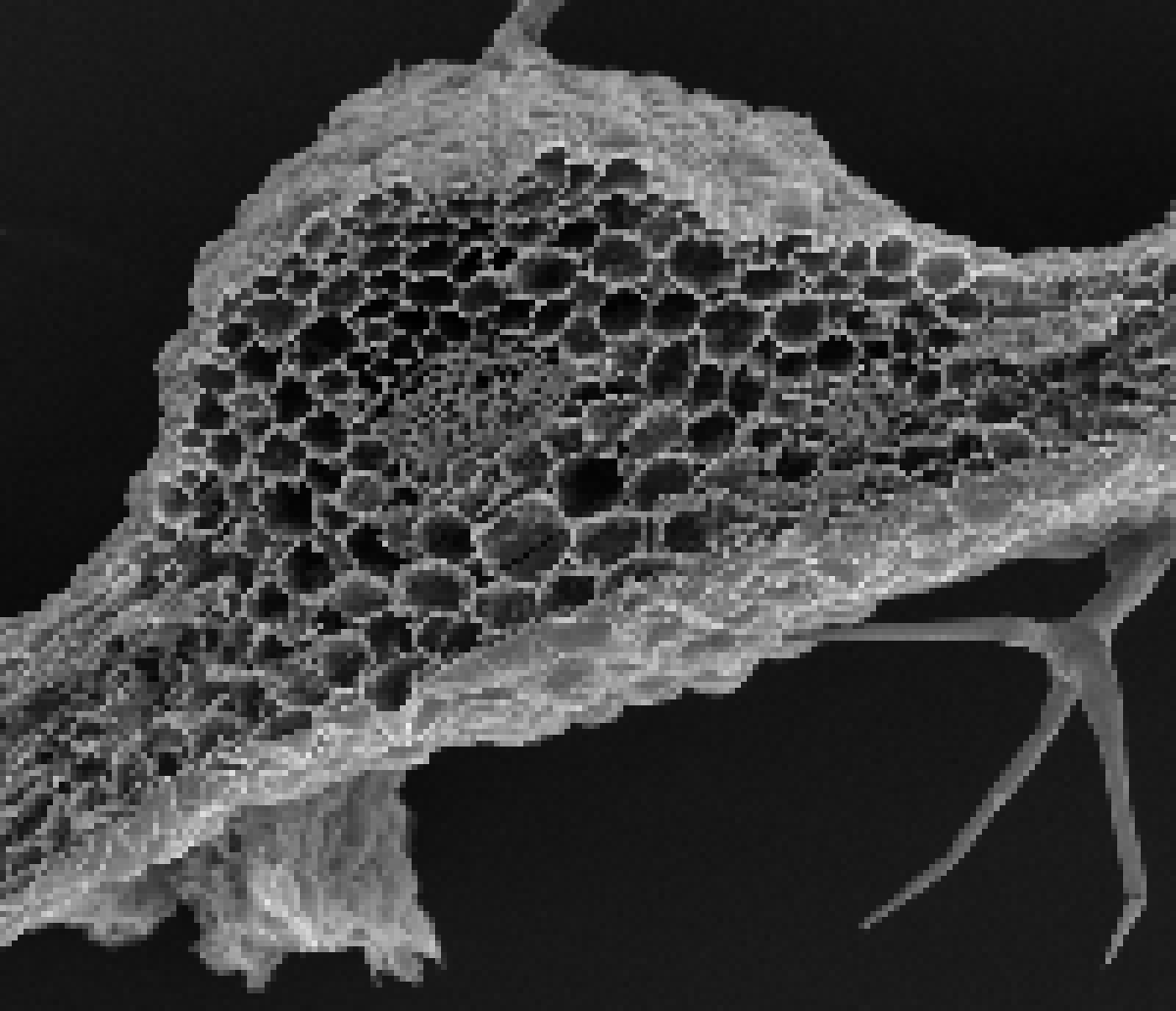
Priming Plant Cells
Lots of video games have avatars, or characters you can make to look like you. Maybe yours would have dark hair, brown eyes, and a round face. While this is what you see displayed on the screen, the code the computer uses to make this avatar is much more complex. Other features might be hidden in the computer, like the code for blue eyes, but they don't appear on the screen.
Your body is more similar to this than you might think. Your body holds lots of "codes" or genes in your DNA. All of the DNA in your cells makes up your genotype. But only some of these genes are expressed, or used by your body. The genes that are used to give your features, like your eye color, hair color, or behavior, are a part of your phenotype. So the genotype is in the coding and the phenotype is your avatar.
How Can Researchers Change the Phenotype of a Plant?
By inserting a specific piece of DNA into the genetic code of a seedling.

To get plants to grow more with less phosphorus, Dr. Gaxiola and his team inserted the gene that expresses the enzyme AVP1. This let the plant cells transport more sugars from the leaves to the rest of the plant. Plants with this added gene grow more leaves, shoots, and roots with very little phosphorus. The researchers also added a special piece of DNA from a virus. This DNA targets enzymes only in phloem cells.
Phloem are the tissues that transport sugars from the leaves to the roots. It's important to target this tissue because most of the benefits from AVP1 only happen when they are in phloem cells. Other work has shown that when AVP1 is decreased in phloem cells, but left at normal levels in other cells, plants are stunted and do worse. Research often needs to be very detailed like this to make breakthroughs in science.
Additional images via Wikimedia Commons. Cross-section of phloem and xylem taken by Gaxiola's lab using an electron microscope.
Read more about: Phosphate Fix
Bibliographic details:
- Article: Priming Plant Cells
- Author(s): Dr. Biology
- Publisher: Arizona State University School of Life Sciences Ask A Biologist
- Site name: ASU - Ask A Biologist
- Date published: 19 Dec, 2015
- Date accessed:
- Link: https://askabiologist.asu.edu/priming-plant-cells
APA Style
Dr. Biology. (Sat, 12/19/2015 - 20:16). Priming Plant Cells. ASU - Ask A Biologist. Retrieved from https://askabiologist.asu.edu/priming-plant-cells
Chicago Manual of Style
Dr. Biology. "Priming Plant Cells". ASU - Ask A Biologist. 19 Dec 2015. https://askabiologist.asu.edu/priming-plant-cells
Dr. Biology. "Priming Plant Cells". ASU - Ask A Biologist. 19 Dec 2015. ASU - Ask A Biologist, Web. https://askabiologist.asu.edu/priming-plant-cells
MLA 2017 Style

A close-up, cross-section view of the tube-like phloem and xylem tissues (looking into the tubes).
Be Part of
Ask A Biologist
By volunteering, or simply sending us feedback on the site. Scientists, teachers, writers, illustrators, and translators are all important to the program. If you are interested in helping with the website we have a Volunteers page to get the process started.

